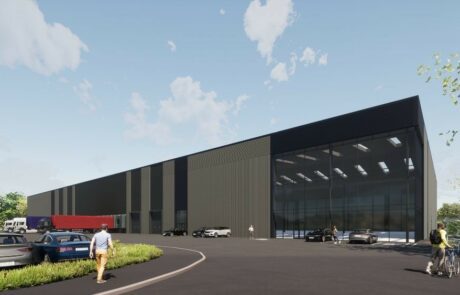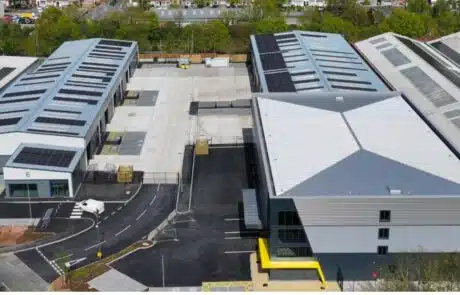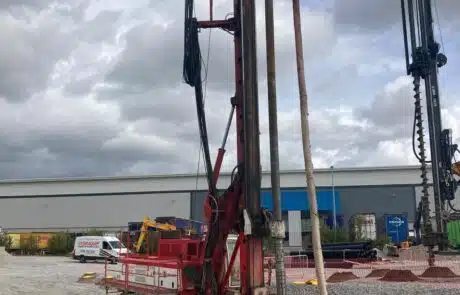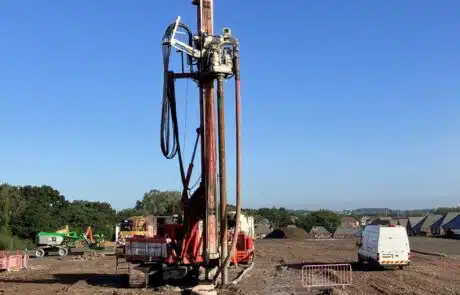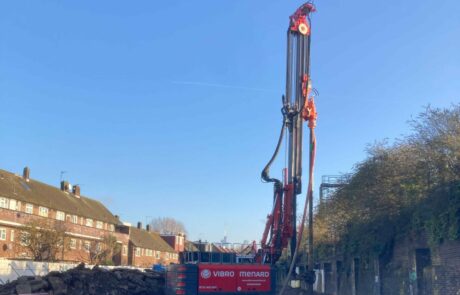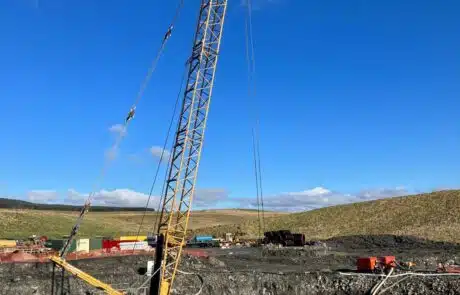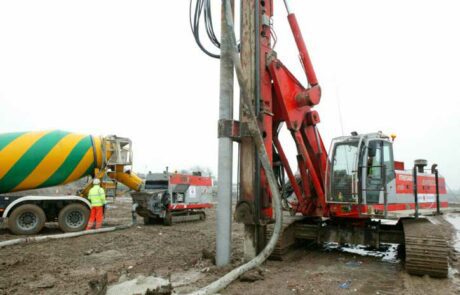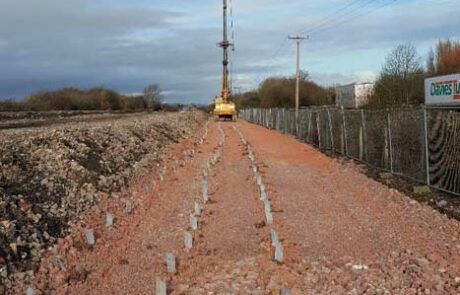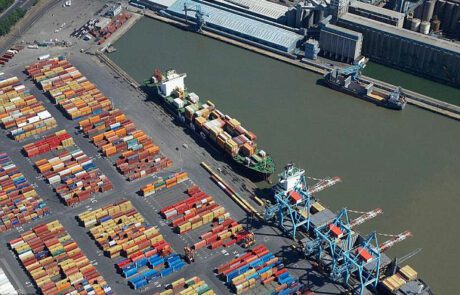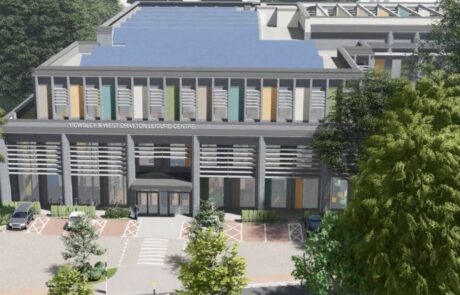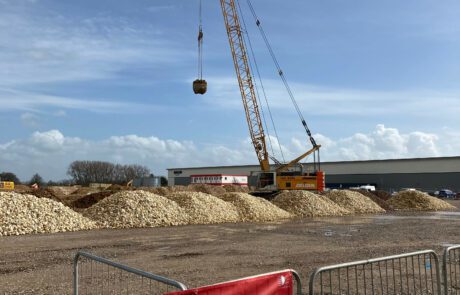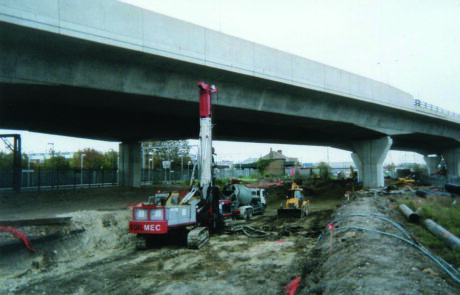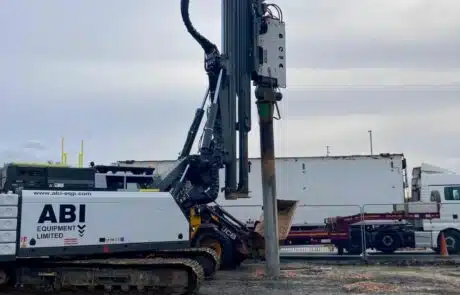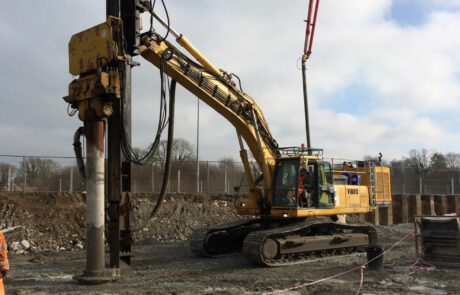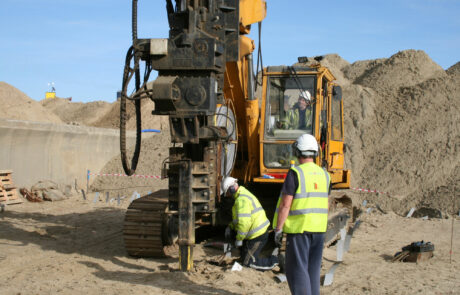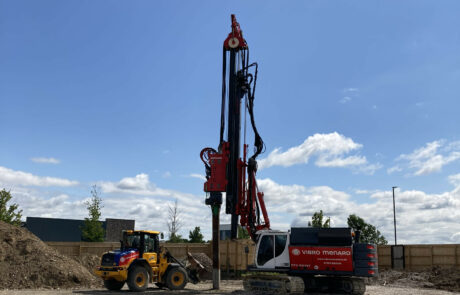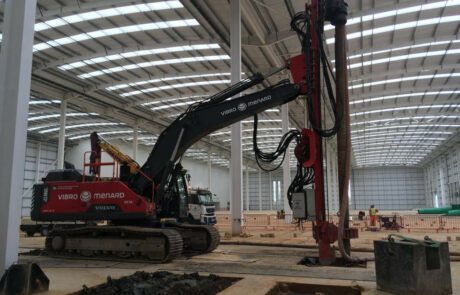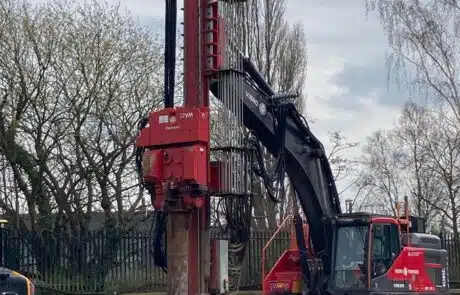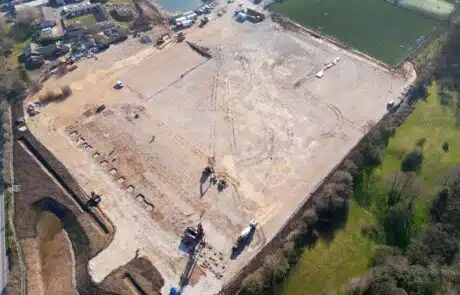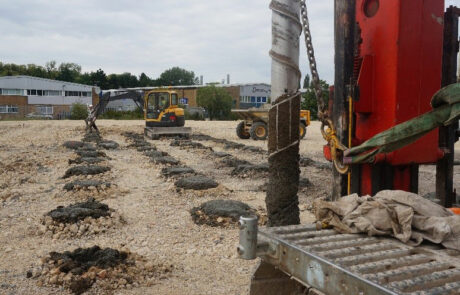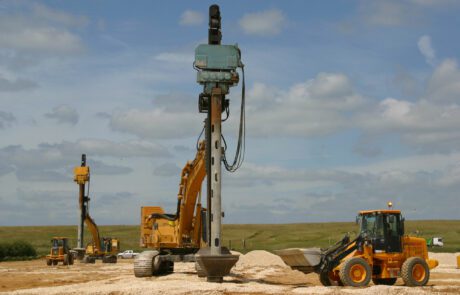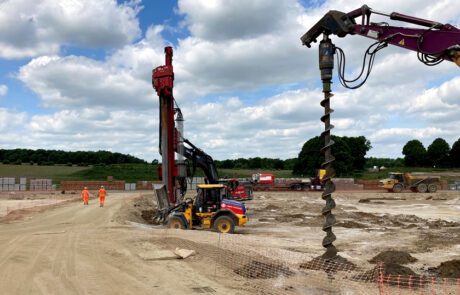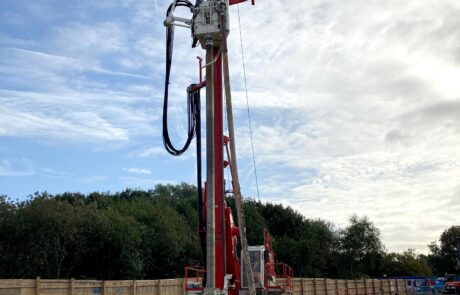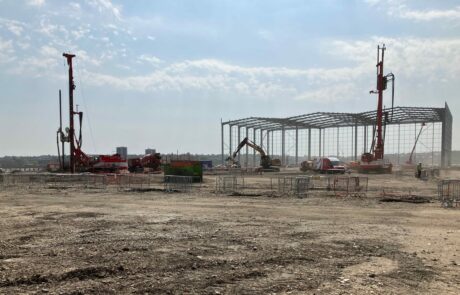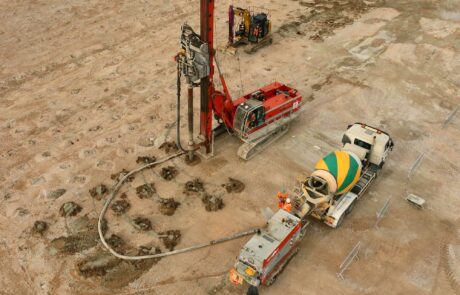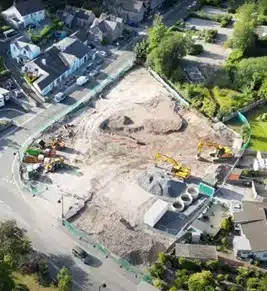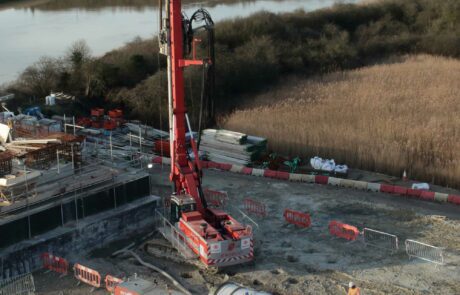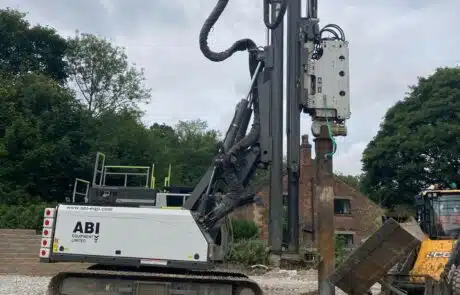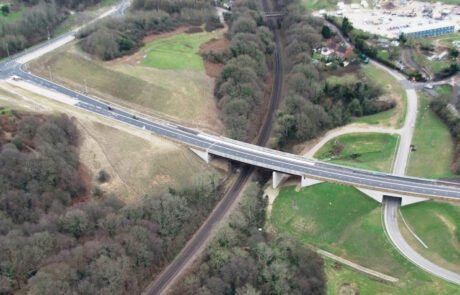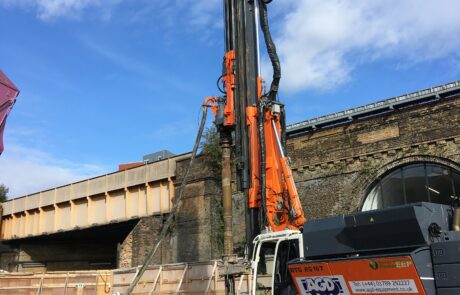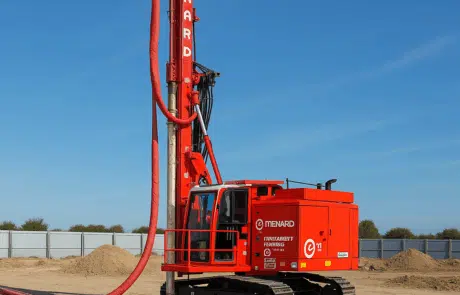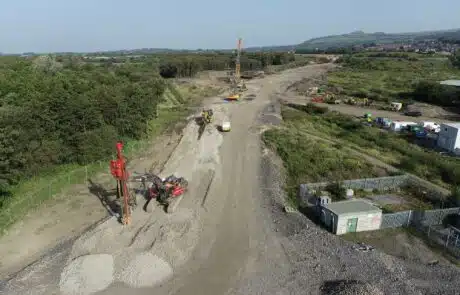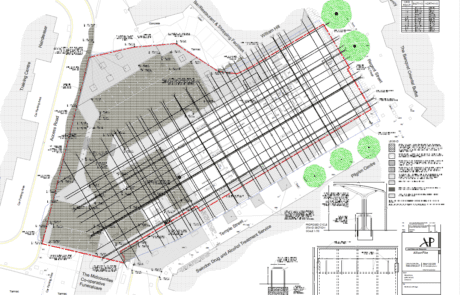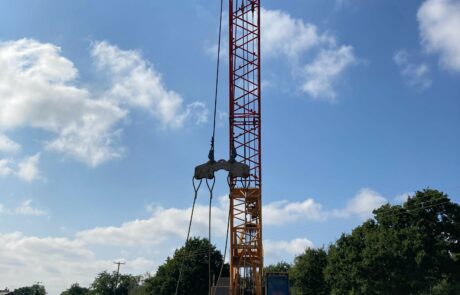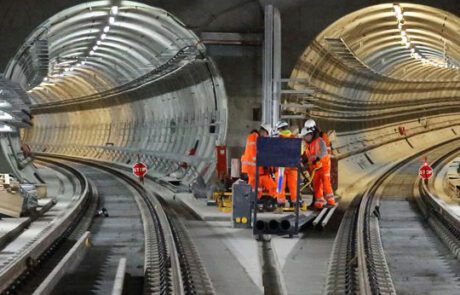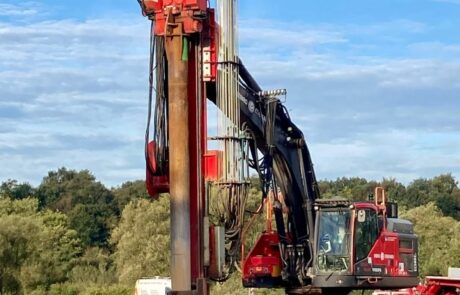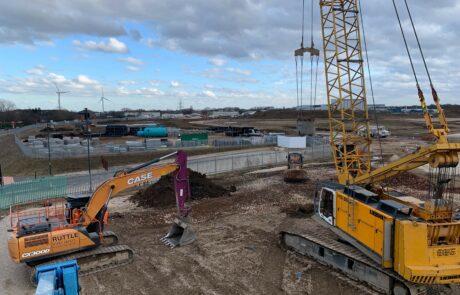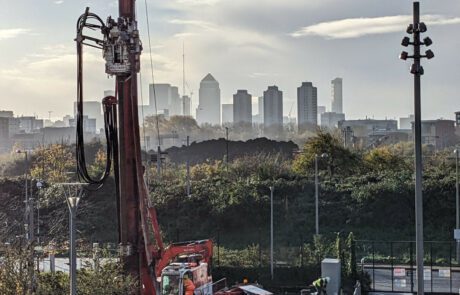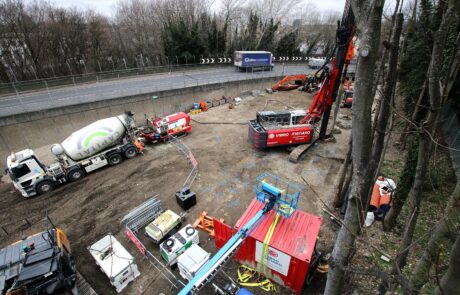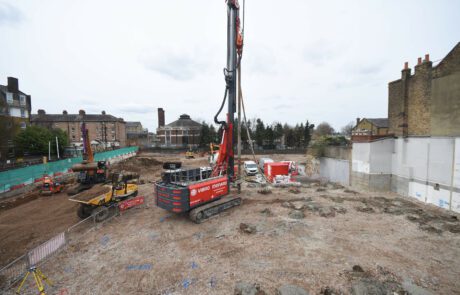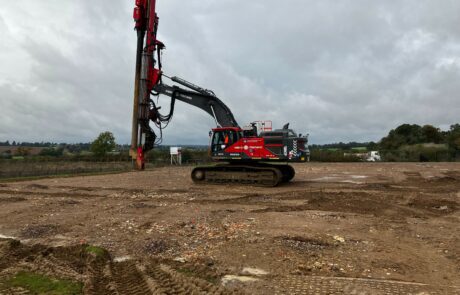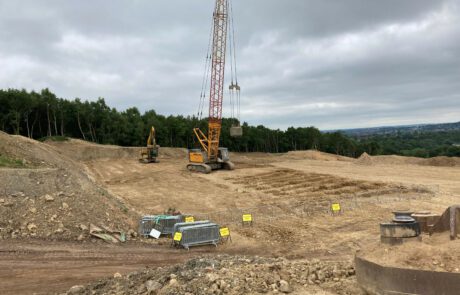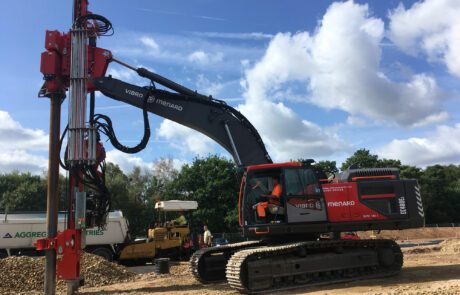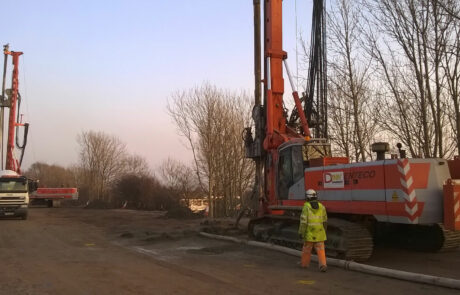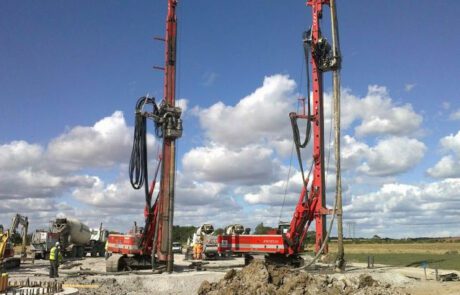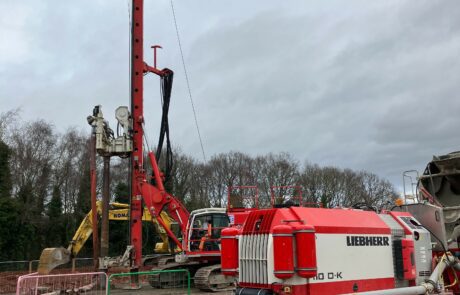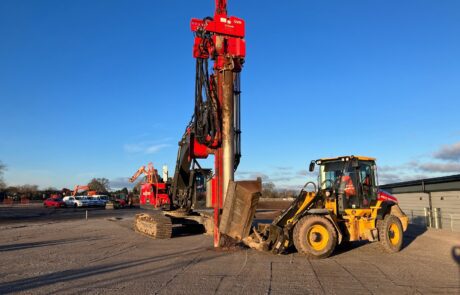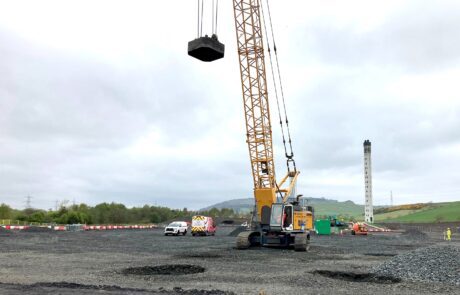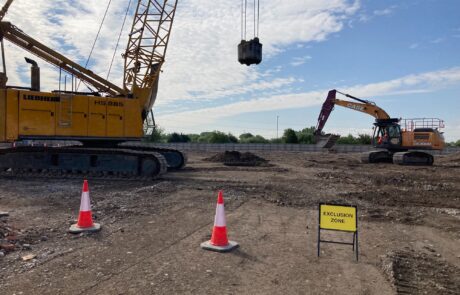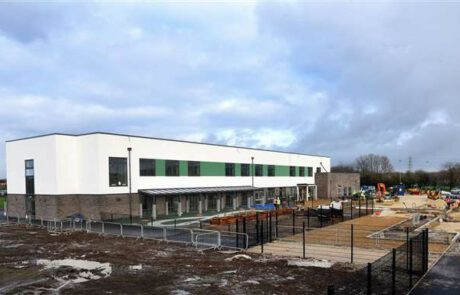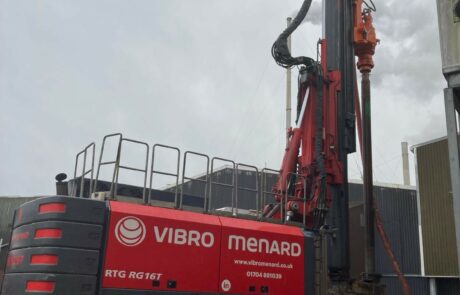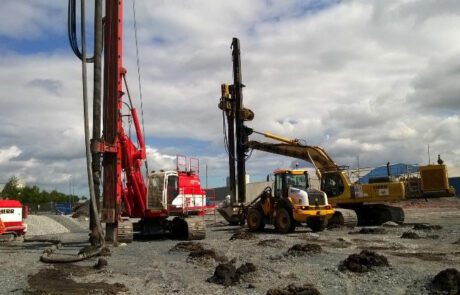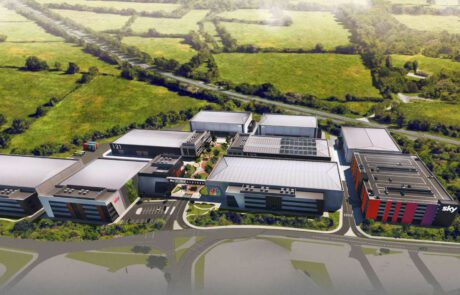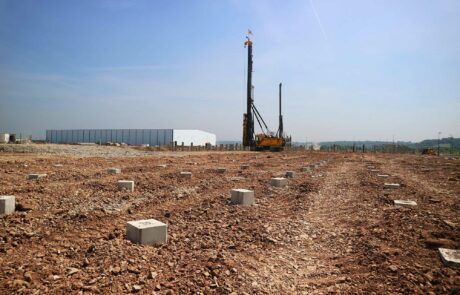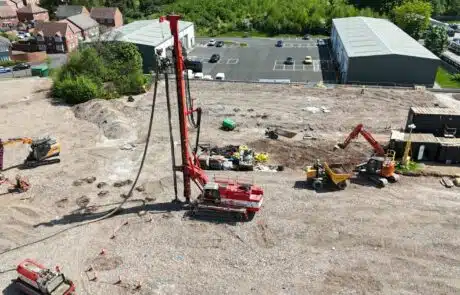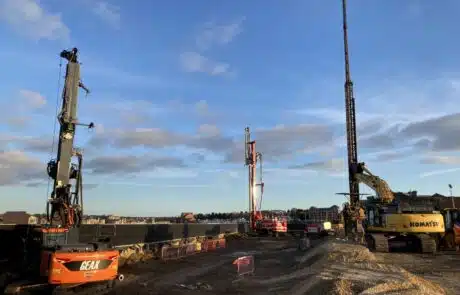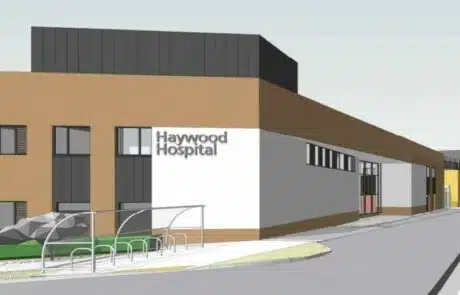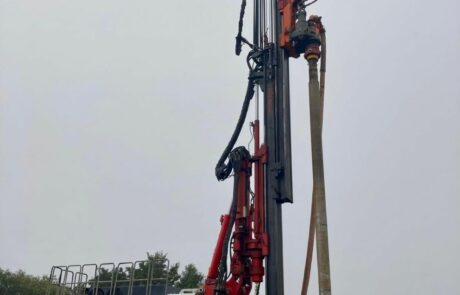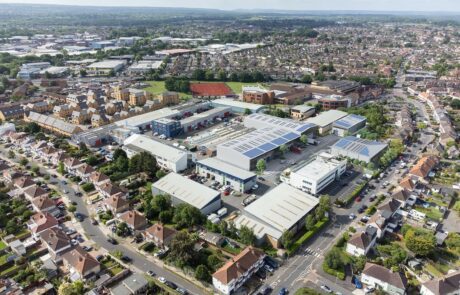OWNER:
Panattoni
ENGINEER:
Burrows Graham
GENERAL CONTRACTOR:
TanRo
MAIN FIGURES:
c.1,000 Controlled Modulus Columns
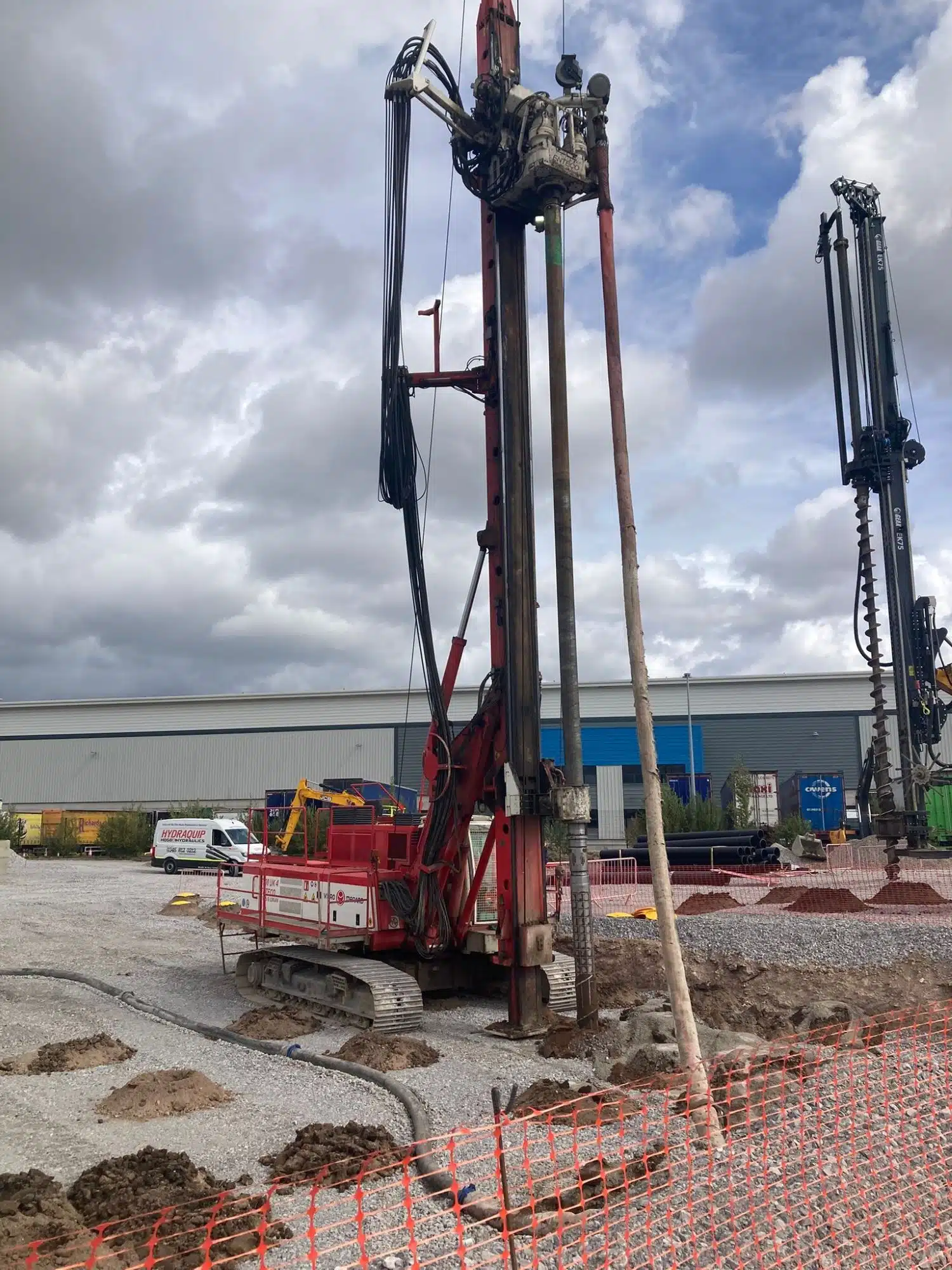
Project Details
Menard was initially approached by TanRo to provide a ground improvement solution for a new industrial unit planned on a site previously used as arable farmland. The proposed development featured a large footprint with high floor loadings and strict settlement tolerances, making uniform support across the entire structure essential. TanRo sought a solution that would not only meet the technical requirements but would also minimise construction time and cost. Given the scale and sensitivity of the project, traditional deep foundation methods were deemed less suitable.
Ground Conditions
The ground investigation revealed a complex and variable stratigraphy across the site. The upper layers consisted of topsoil overlying made ground, which included colliery spoil, opencast backfill, and pond deposits. These materials varied significantly in depth and composition, with made ground depths ranging from approximately 0.45 metres to over 3.00 metres. Beneath this, Glacial Till was encountered, extending to depths of up to 8.70 metres. The variability in soil types and consistency posed challenges for foundation design, particularly in areas with soft or compressible materials. Groundwater was present across the site, typically found between 0.90 and 5.80 metres below ground level, often perched within sand lenses embedded in the Till. These perched water tables added complexity to the ground improvement strategy, requiring a solution that could perform reliably without the need for dewatering or introducing pathways for potential contaminant migration.
Solution
Given the stratigraphy and environmental constraints of the site, the Controlled Modulus Column (CMC) system was selected as the most suitable ground improvement technique. The ground conditions were generally favourable for CMC installation, especially after the removal of organic pond deposits, which were replaced with engineered fill. A total of c.1,000 CMCs were installed to depths ranging from 3.8 to 8.7 metres, positioned beneath pad, strip, and floor slab foundations. These foundations were designed for a Serviceability Limit State (SLS) capacity of 225 kPa beneath footings and a UDL of 50 kPa beneath slabs. The CMCs effectively improved soil stiffness and load distribution, limiting residual settlements to 25 mm and differential movements to a ratio of 1/500. This solution met both structural and environmental requirements, avoiding deep excavation and dewatering. It also aligned with the site’s groundwater and contamination profile, ensuring minimal disruption and long-term stability.

